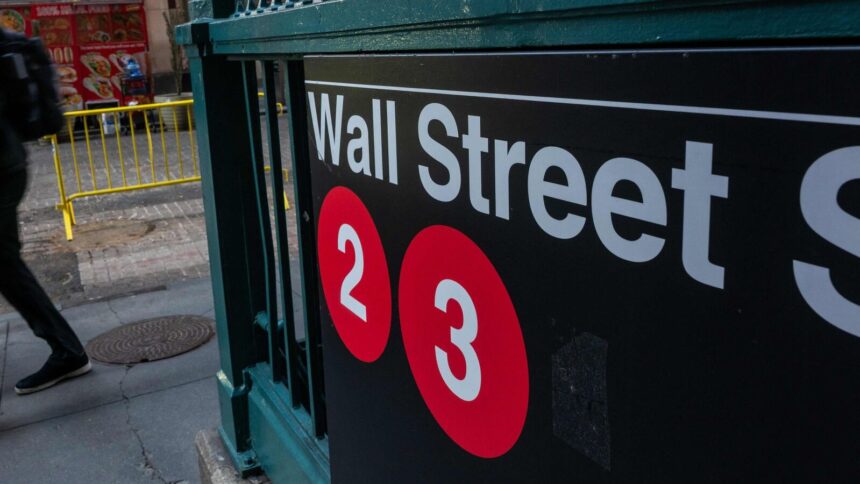(Bloomberg) — US bonds, stocks and the dollar dropped after Moody’s Ratings stripped the government of its top credit rating, reinforcing concern about the status of American assets. Gold rose.
S&P 500 contracts fell 1.3%, with investors cooling on equities after a five-day winning streak. European and Asian shares also dropped. The yield for 30-year Treasuries surpassed 5%, rising to the highest level since November 2023. The euro rose as much as 1.1%, leading gains against the greenback among major currencies.
The downgrade risks reinforcing Wall Street’s growing worries over the US sovereign bond market as a ballooning budget deficit shows little signs of narrowing. The rating cut comes as lawmakers debates even more unfunded tax cuts and the economy looks set to slow as Trump upends long-established partnerships and restructures trade deals.
“The current level of yields on US Treasuries doesn’t feel out of touch with economic fundamentals,” said Stephane Deo, senior portfolio manager at Eleva Capital in Paris. As for equities, “it feels very normal to me that the market needs a breather and the Moody’s downgrade is good excuse for doing just that.”
Moody’s joined Fitch Ratings and S&P Global Ratings in grading the world’s biggest economy below the top triple-A position. The credit assessor now has a stable outlook. While Moody’s recognized the US’ significant economic and financial strengths, it no longer fully counterbalances the decline in fiscal metrics, the ratings company said.
On Monday, 10-year Treasury yields advanced seven basis points to 4.54% and their 30-year equivalents rose about eight basis points to 5.02%. Meanwhile, gold rose 1.1%, with appetite for the haven asset boosted by concerns about the US economic outlook.
“If history is any guide, rating action impact has typically been short-lived,” said Mohit Kumar, Jefferies International chief economist and strategist. “That said, the background today is different. The tariff war has already led a number of investors to question the credibility of investing in the US and to seek alternatives.”
On Capital Hill, a key House committee advanced Trump’s tax and spending package after Republican hardliners won agreement from party leaders to speed up cuts to Medicaid health coverage. The House Budget Committee approved the legislation late Sunday night, after four ultraconservatives on the panel joined with Democrats on Friday to reject the legislation.
Investors should buy any dips in US stocks fueled by the rating cut, said Morgan Stanley’s Michael Wilson. The strategist said the corporate earnings season seemed to have ended with no major impact from the uncertainty over tariffs. A pickup in profit upgrades also bodes well for further equity gains, even if the coming month show slightly weaker trade data, he said.
“While we’re respectful of this potential outcome, we think the probability that the market looks through such weakness and deems it temporary just went up because of the trade agreement with China,” Wilson said.
In Asia, China’s industrial output expanded faster than expected in April while consumption disappointed, highlighting the challenges facing the world’s second-largest economy despite a quick de-escalation of trade tensions with the US.
Here’s what market participants are saying:
Chris Turner, head of currency strategy at ING
“Expect a risk premium to stay in the dollar this week, with investors also on the lookout for any currency references in trade deals currently being negotiated with Asia.”
Vasu Menon, managing director of investment strategy at Oversea-Chinese Banking Corp. in Singapore:
The rating cut will add to “growing concerns about the loss of US exceptionalism and make non-US assets more appealing to global stock investors, who have been rotating out of US equities into other markets like European equities.”
Benoit Anne, senior managing director at MFS Investment Management’s strategy and insights group:
“Should UST yields happen to settle at a higher level, this may ultimately represent a risk for the equity market valuation, but we believe that we are still far away from the potential pain threshold.”
Pierre-Alexis Dumont, chief investment officer at Sycomore Asset Management in Paris:
“The US needs to keep the dollar at an attractive level if it wants the world to continue to finance its deficits.”
- S&P 500 futures fell 1.3% as of 6:20 a.m. New York time
- Nasdaq 100 futures fell 1.7%
- Futures on the Dow Jones Industrial Average fell 0.9%
- The Stoxx Europe 600 fell 0.7%
- The MSCI World Index rose 0.1%
Currencies
- The Bloomberg Dollar Spot Index fell 0.7%
- The euro rose 1% to $1.1277
- The British pound rose 0.9% to $1.3398
- The Japanese yen rose 0.6% to 144.78 per dollar
Cryptocurrencies
- Bitcoin fell 1.1% to $102,944.54
- Ether rose 0.4% to $2,404.21
Bonds
- The yield on 10-year Treasuries advanced seven basis points to 4.54%
- Germany’s 10-year yield advanced five basis points to 2.64%
- Britain’s 10-year yield advanced seven basis points to 4.72%
Commodities
- West Texas Intermediate crude fell 1% to $61.88 a barrel
- Spot gold rose 1.1% to $3,239.25 an ounce
This story was produced with the assistance of Bloomberg Automation.
–With assistance from Anand Krishnamoorthy and Sagarika Jaisinghani.
More stories like this are available on bloomberg.com






